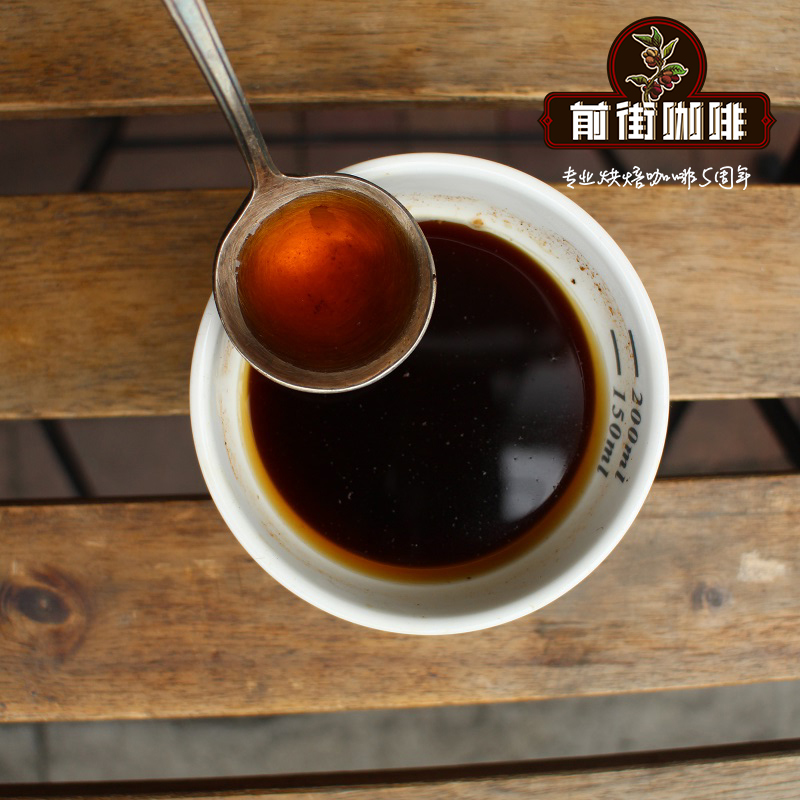What are the advantages of Arabella and Robusta, the big categories of world coffee beans? The common Arabica

Professional coffee knowledge exchange more coffee bean information please follow the coffee workshop (Wechat official account cafe_style)
What are the advantages of Arabella and Robusta, the big categories of world coffee beans? How many kinds of Arabica are common?
A brief list of the three major coffee varieties in the world:
one. Types of coffee: coffee beans can be roughly divided into three categories: (1) Arabica coffee tree, (2) Robusta coffee tree and (3). Liberica Coffee Tree. two. Coffee production: Arabica accounts for 69% of the world coffee production, Robusta accounts for 30% of the world coffee production, and Liberica accounts for about 1% of the world coffee production. Therefore, the types of coffee bean trading and coffee futures trading in the world are mainly Arabica and Robusta. three. Comparison of the fundamentals of Arabica / Robusta:
Arabica (Arabica)
It is the most popular coffee bean on the market, mainly growing in the plateau regions of the Western Hemisphere, including Brazil, Colombia and other Latin American countries. Brazil and Colombia are the first and second largest coffee producers in the world, respectively. Growing height is more than 200 feet, moderate and stable temperature areas.
Arabica coffee trees are planted from seedlings and take five years to bear fruit. The main harvest period is May-September in Brazil and April-June in Colombia, accounting for about 70% of the global market.
The taste is mild, with aroma and sour taste, high quality and relatively high price.
Robasta (Robusta)
It mainly grows in the low-lying and hot regions of Africa and Asia. Ivory Coast is the main production, followed by Uganda, Indonesia, Vietnam, Thailand, India, etc., with a height of 500 to 200 feet.
Robasta coffee trees take only two to three years to bear fruit, with harvest in Indonesia from April to August each year and in Vietnam from October to April of the following year, accounting for about 30 per cent of the global market.
It has the characteristics of strong resistance to diseases and insect pests, and its taste and aroma are not popular. It is mainly used for mixing and as the raw material of instant coffee.
The difference between Arabica vs Robusta Arabica coffee and Robasta coffee:
Coffee bean is the seed of Rubiaceae Family. There are at least 25 main varieties of Coffea Genus, among which the two most important varieties are Arabica species Coffea arabica (Arabica coffee) and Canafula species Coffea canephora (Robusta coffee), also known as Robasta Coffee. Arabica coffee beans account for 70% of the world's production, and Robasta coffee beans account for about 30%. Arabica coffee has 44 chromosomes, while Robasta coffee has 22 chromosomes. therefore, Arabica coffee is a crop that cannot be crossed with Robasta coffee.
Coffee trees will be affected by the climate, altitude, soil and other factors, affecting the quality and flavor of coffee beans, such as other agricultural products, such as tea and wine, and so on. So even if you come from the same country, different regions have different flavors, and the price is naturally different. Coffee trees are evergreen plants and are cultivated in tropical and subtropical areas. the most suitable growth conditions are that there should be an appropriate amount of Rain Water and the drainage of the land is good, so they are mostly selected on sloping slopes rich in volcanic ash (rich in organic matter). Therefore, most of the high-quality Arabica coffee beans are harvested manually and carried down the mountain by horses or mules.
The bean shape of Arabica coffee is small, the front is long oval, the middle split crack is narrow and tortuous, S-shaped, and the arc on the back of the bean is more complete. The bean shape of Robasta coffee bean is larger, the front tends to be round, and the split line crack in the middle is in a straight line. (Viv Ole é Arabica coffee beans in the picture below are Maragogype beans with higher grade and larger bean shape.) as far as planting is concerned, Robasta coffee tree has the characteristics of high temperature resistance, cold resistance, drought resistance, moisture resistance, pest resistance and strong adaptability, and can grow well on flat ground. unfortunately, the coffee beans produced are lack of aroma, bitter taste (because of too much caffeine) and not enough acidity. Therefore, it is mostly used for instant coffee, canned coffee, or brewed three-in-one coffee. In Italy, many coffee shops add an appropriate proportion of Robusta Robasta beans to make espresso (Espresso) to enhance the "taste" (such as strong, rough, etc.).
Comparison of quality and quantity:
Arabica coffee represents quality, while robastian coffee represents quantity.
How to distinguish Arabica coffee beans from Robusta coffee beans:
Arabica coffee beans are oval and flat in shape.
Types of coffee beans
Blue Mountain
The best beans produced on the slopes of the Blue Mountains in Jamaica have a limited output of delicious food in the world, and they are the best in coffee, but they are mostly monopolized by coffee buyers from Japan, the United States and Britain, so most of the blue mountains on the market are not pure. Recently, the stationmaster saw the Blue Mountain imported from Japan in a department store in Nanjing, Taipei, and the price was NT $1700 / lb. of course, there was a price of about NT $420 / lb in the store, with a price difference of about 4 times. Therefore, the purity of Blue Mountain on the market needs to be evaluated by netizens themselves.
Claw wow
Beans from Indonesia, Java has become a coffee center, bitter and mellow, Indonesian beans with rustic flavor, with wild, mellow Yemeni mocha beans is a good combination.
Manning
The same as Java, it is produced in Indonesia, but Mantenin is of stable quality, rich texture, good consistency and low sour taste. It has been the main pillar of comprehensive coffee for many years. Because of the sweet and bitter taste, strong taste and low sour taste, Manning has been the favorite of the stationmaster in recent years, and it is more suitable for drinkers who do not like sour taste.
Mocha
Mocha originally refers to the beans transported by the Arabian port of Mocha, located in the countries of Yemen on the Arabian Peninsula. Today's pure and rare Yemeni mocha is rare. The pure mocha is rare and expensive, rich and mellow in flavor, and strong in sour taste.
Baxi
Brazilian beans have their own special flavor, but they are not liked by buyers and are often used as a substitute when coffee beans are produced less.
Kenya (Kenya- Africa)
Located in Kenya near East Africa, the coffee beans planted are high-quality Arabica varieties. The size of beans is medium-large, very thick and delicious, and moderate acidity. The grade is divided into seven grades according to the size of the coffee beans and six grades according to the taste. "Kenya AA" is particularly well received in terms of taste.
Ethiopia (Ethiopia- Africa)
The origin of the name of coffee comes from the Canadian place in the southwest and the Sidamo place in the south are the main producing areas. In addition, the Eastern Highland Hara is also famous for its coffee. The beans are small and fragrant, and Hara. Mocha "Longgubeli" and other special names, have a unique flavor, usually only known as mocha.
Yemen (Yemen- Africa)
Yemen, commonly known as Arabia, the birthplace of the Arabica species, was once popular in the name of "mocha coffee", but now it is no longer a grand occasion. But its wine-like flavor, rich and mellow characteristics, is still quite popular with consumers after-dinner coffee. Like Brazil, the coffee produced in Columbia is the same as the three swordsmen who are chosen as blended coffee. The "Matari" produced in Bani Matar and the "Sanani" produced in Sanaya are also quite famous.
Robusta coffee beans are oval, spherical or nearly spherical in shape. Robasta grows coffee trees that are resistant to high temperature, cold, moisture, drought and even mold. Its adaptability is extremely strong, it can grow very well on flat land, and harvesting does not necessarily need manual work, but can be carried out completely by vibrating machines. As far as planting is concerned, Robasta has many advantages in growing coffee trees, but it is a pity that the coffee beans produced are bad in aroma, bitter in taste, insufficient in acidity, and double the caffeine content of Elaraby. Robasta has more personality in the mouth of caffeine beans, which is mostly used for blending or instant coffee.
These two kinds of coffee beans are divided by origin, Elaraby is mainly found in Brazil, Colombia, Central American countries in South America, Costa Rica, Guatemala, Jamaica and Mexico in the Caribbean, as well as Ethiopia, Kenya, Tanzania and other countries. The granules of Arabica coffee beans are large, uniform in size and glossy in color.
Robastian coffee beans are mostly small, with different shapes and sizes, and are not very good-looking. They are mainly produced in Uganda, C ô te d'Ivoire, Congo, Zaire, Angola and other countries. Generally speaking, the coffee beans that everyone is most familiar with when drinking individual coffee in Taiwan cafes, such as the mountains of Brazil, Mantenin of Colombia, Mocha of Yemen, and Blue Mountains of Jamaica, are all high-quality coffee beans grown by Elaraby.
The country or region that produces coffee:
Coffee is produced in about 60 countries around the world, and the main coffee producing areas are located in the circular zone of the Tropic of Cancer, also known as Coffee Zone or Coffee Belt.
The main producing areas include Central and South America, Africa, Asia, southern Arabian Peninsula and Oceania.
What these areas have in common is that the temperature and annual rainfall are about the same, and there is plenty of sunshine and fertile soil.
Among the many varieties of Arabica, the most famous and special varieties of coffee are Typic and Bourbon. Bourbon is more resistant to high temperature than Typic and is more suitable for low altitude.
Important Notice :
前街咖啡 FrontStreet Coffee has moved to new addredd:
FrontStreet Coffee Address: 315,Donghua East Road,GuangZhou
Tel:020 38364473
- Prev

Ethiopian Coffee | Watkonga strict selection of Red Cherry | recommendation of individual coffee beans
Professional coffee knowledge exchange more coffee bean information please follow the coffee workshop (Wechat official account cafe_style) front street coffee individual coffee bean recommendation-Ethiopian Coffee Yega Sheffield Red Cherry Project Ethiopia-Yega Sheffield Watt Conga strict selection of Red Cherry Sun Ethiopia-Yirgacheffe Wotte Konga Washing Station Gr1 Nat
- Next

Coffee beans three types of Arabica types of iron pickup Bourbon rose summer coffee varieties difference
Professional coffee knowledge exchange More coffee bean information Please pay attention to coffee workshop (Weixin Official Accounts cafe_style) What are the three major categories of coffee beans in the world? What kind of coffee beans are suitable for growing? Coffee tree is a genus of Rubiaceae in botany. The classification of coffee trees is complex, with many species, diversity and lineages. Different varieties of coffee
Related
- Detailed explanation of Jadeite planting Land in Panamanian Jadeite Manor introduction to the grading system of Jadeite competitive bidding, Red bid, Green bid and Rose Summer
- Story of Coffee planting in Brenka region of Costa Rica Stonehenge Manor anaerobic heavy honey treatment of flavor mouth
- What's on the barrel of Blue Mountain Coffee beans?
- Can American coffee also pull flowers? How to use hot American style to pull out a good-looking pattern?
- Can you make a cold extract with coffee beans? What is the right proportion for cold-extracted coffee formula?
- Indonesian PWN Gold Mandrine Coffee Origin Features Flavor How to Chong? Mandolin coffee is American.
- A brief introduction to the flavor characteristics of Brazilian yellow bourbon coffee beans
- What is the effect of different water quality on the flavor of cold-extracted coffee? What kind of water is best for brewing coffee?
- Why do you think of Rose Summer whenever you mention Panamanian coffee?
- Introduction to the characteristics of authentic blue mountain coffee bean producing areas? What is the CIB Coffee Authority in Jamaica?

